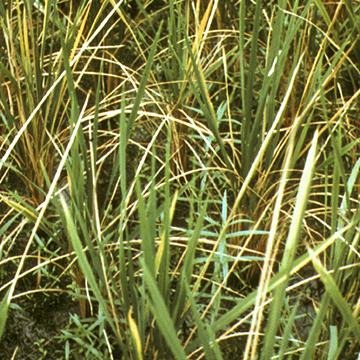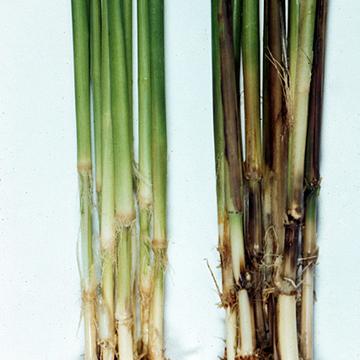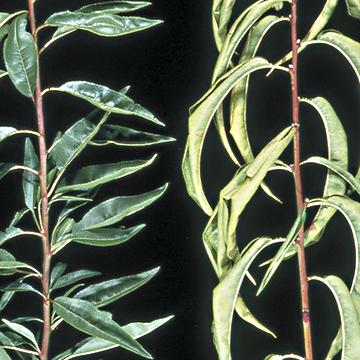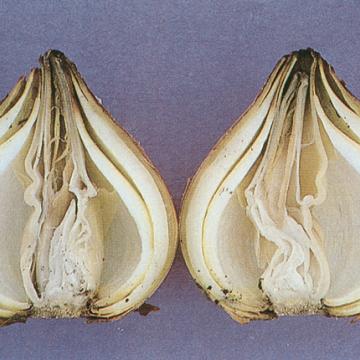DISEASE: Bacterial foot rot
HOST: Rice
The disease causes sheaths to turn dark brown and rot; dead leaves droop. Nodes, culms, and crowns also decay, and infected tillers are easily detached from the crown. Culms and internodes turn black.

Bacterial foot rot | Rice
DISEASE: Bacterial foot rot
HOST: Rice (Oryza sativa)
PATHOGEN: Dickeya zeae
PATHOGEN SYNONYM: Erwinia chrysanthemi pv. zeae
SOURCE: M. Goto
DISEASE: Bacterial foot rot
HOST: Rice
Decayed culms (right) and healthy culms (left). Leaf sheaths of infected plants exhibit dark brown decay and attached leaves turn yellow and wilt.
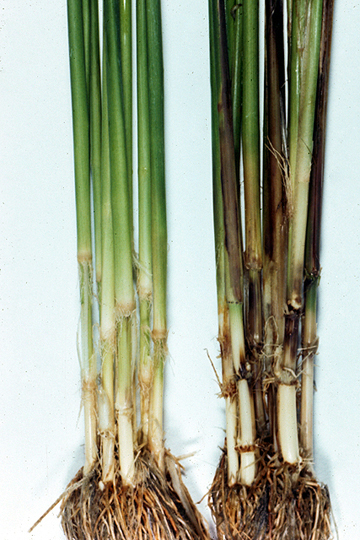
Bacterial foot rot | Rice
DISEASE: Bacterial foot rot
HOST: Rice (Oryza sativa)
PATHOGEN: Dickeya zeae
PATHOGEN SYNONYM: Erwinia chrysanthemi pv. zeae
SOURCE: M. Goto
DISEASE: European stone fruit yellows
HOST: Almond
The disease causes yellowing and rolling of leaves (right). Leaves become thick and rough in texture. Healthy leaves (left).
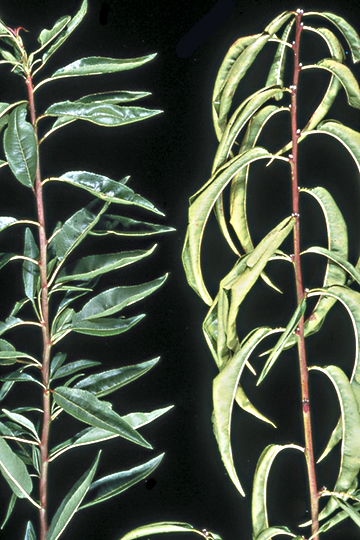
European stone fruit yellows | Almond
DISEASE: European stone fruit yellows
HOST: Almond (Prunus dulcis)
PATHOGEN: 'Candidatus Phytoplasma prunorum'
PATHOGEN SYNONYM: Phytoplasma Apple proliferation group
SOURCE: E. Seemueller
DISEASE: Slippery skin
HOST: Onion
Rot progresses from the top of infected scales and eventually internal tissues rot. In early stages, the only external symptoms may be softening of the neck.
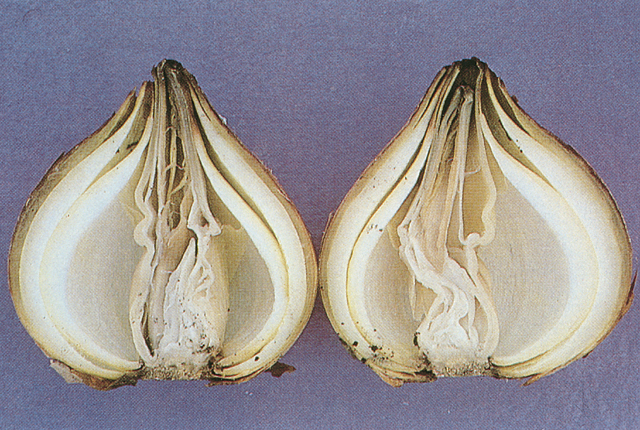
Slippery skin | Onion
DISEASE: Slippery skin
HOST: Onion (Allium cepa)
PATHOGEN: Burkholderia gladioli pv. alliicola
PATHOGEN SYNONYM: Pseudomonas gladioli pv. alliicola
SOURCE: H. Schwartz


